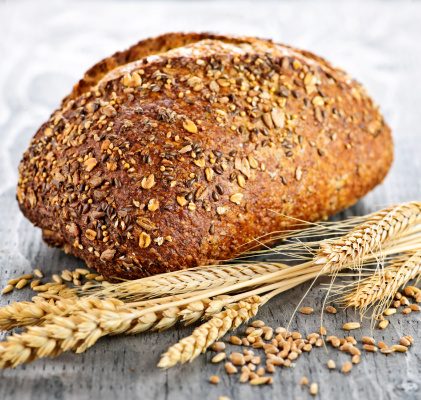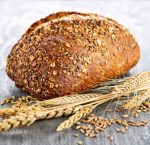
Whole grains should be a vital part of your diet. Whole grains—including wheat, brown rice, barley, oats, quinoa, amaranth, and buckwheat—are cereal grains that are cultivated globally for your diet.
Whole grains contain bran, which is the outer coating surrounding the endosperm, and the germ portion of the grain. It differs from your standard white, processed grains, such as white flour and refined cereals, which remove the bran and germ portions of the grain, leaving the endosperm for use. The problem is that although the endosperm contains high amounts of carbohydrates, it doesn’t contain many other important nutrients like fiber, protein, iron, magnesium, B nutrients, and essential fatty acids. The process of refining grains also changes the glycemic index of the grain flower, making it an unhealthy choice to consume.
The Unhealthy Link Between Refined Grains and Your Health
The consumption of refined grain products has continually related to the development of insulin resistance, diabetes, obesity, hypertension, and cardiovascular disease. However, the exact opposite has been shown with the increased consumption of whole grains. That’s because of the vastly different nutritional profile of whole grains compared to refined grains. The benefits of whole grains are quite amazing, to say the least!
The Benefits of Whole Grains
The consumption of whole grains can lower the incidence of cardiovascular disease because of the type of its high-fiber content and the positive effects this has on cholesterol levels, insulin sensitivity, blood pressure regulation, weight gain, and hunger signaling to the brain.
The fiber content in whole grains like oatmeal has continually been associated with decreases in bad cholesterol and waist circumference and increases in good cholesterol. The intake of higher amounts of whole grain foods can also decrease the degree of internal inflammation that can occur within our arteries during the early development of vascular disease.
How to Get the Benefits of Whole Grains
Whole grain foods can also directly affect your degree of insulin sensitivity by improving your cellular response to insulin secretion following a meal. This keeps your blood sugar levels lower and also can positively affect blood fat profiles to lower the risk of type 2 diabetes.
Increased levels of insulin resistance are closely associated with higher levels of inflammation, LDL cholesterol, triglycerides, and high blood pressure.
When combined with an increased waist circumference, that’s when metabolic syndrome is at play. A very common health issue in North America today, it is responsible for a significant degree of health-related morbidity and mortality. My advice is to consume two to three servings of whole grain products every day.
Sources:
Satija, A., et al., “Cardiovascular benefits of dietary fiber,” Curr Atheroscler Rep. December 2012; 14(6): 505-14.
Zhang, J., et al., “Randomized controlled trial of oatmeal consumption versus noodle consumption on blood lipids of urban Chinese adults with hypercholesterolemia,” Nutr J. August 6, 2012: 11: 54.
Lefevre, M., et al., “Effect of whole grains on markers of subclinical inflammation,” Nutr Rev. July 2012; 70(7): 387-96.
Ye, E.Q., et al., “Greater whole-grain intake is associated with lower risk of type 2 diabetes, cardiovascular disease, and weight gain,” J Nutr. July 2012; 142(7): 1,304-13.













